Archives
Christmas Special
The Spirit of Christmas
Putting Christ Back into Christmas
There is a story about Jesus going down Fifth Avenue in New York City (USA) shortly before Christmas. Anyone who visits New York City will not miss  visiting Fifth Avenue because it is a huge, tempting shopping centre. Jesus walked slowly down the Avenue, looking at the Christmas display of materials on sale. After some time, He stopped and said to Himself with a sad look on his face, “I wonder whose birthday they are keeping.”
visiting Fifth Avenue because it is a huge, tempting shopping centre. Jesus walked slowly down the Avenue, looking at the Christmas display of materials on sale. After some time, He stopped and said to Himself with a sad look on his face, “I wonder whose birthday they are keeping.”
If Jesus were to walk through our shopping areas weeks before Christmas, He might say the same thing; whose birthday are they keeping?
We see all kinds of materials on sale which has nothing to do with the spirit of Christmas: Xmas trees, Xmas socks filled with all kinds of tempting stuff, pictures / statues of Father Xmas, Xmas balloons, Xmas cards, many of which do not convey the true meaning of Christmas, Xmas cakes and a variety of pastries, etc. We may also hear Xmas songs being played which do not convey the essence of Christmas.
I have written the word CHRISTMAS replacing the word CHRIST with the letter ‘X’. In my High School years at home, years ago, our algebra teacher used to tell us that the letter ‘X’ stands for an unknown quantity. This is precisely what we are doing with Christ at Christmas time; we have reduced him to an unknown quantity. In fact, we have almost removed Him from the feast of Christmas.
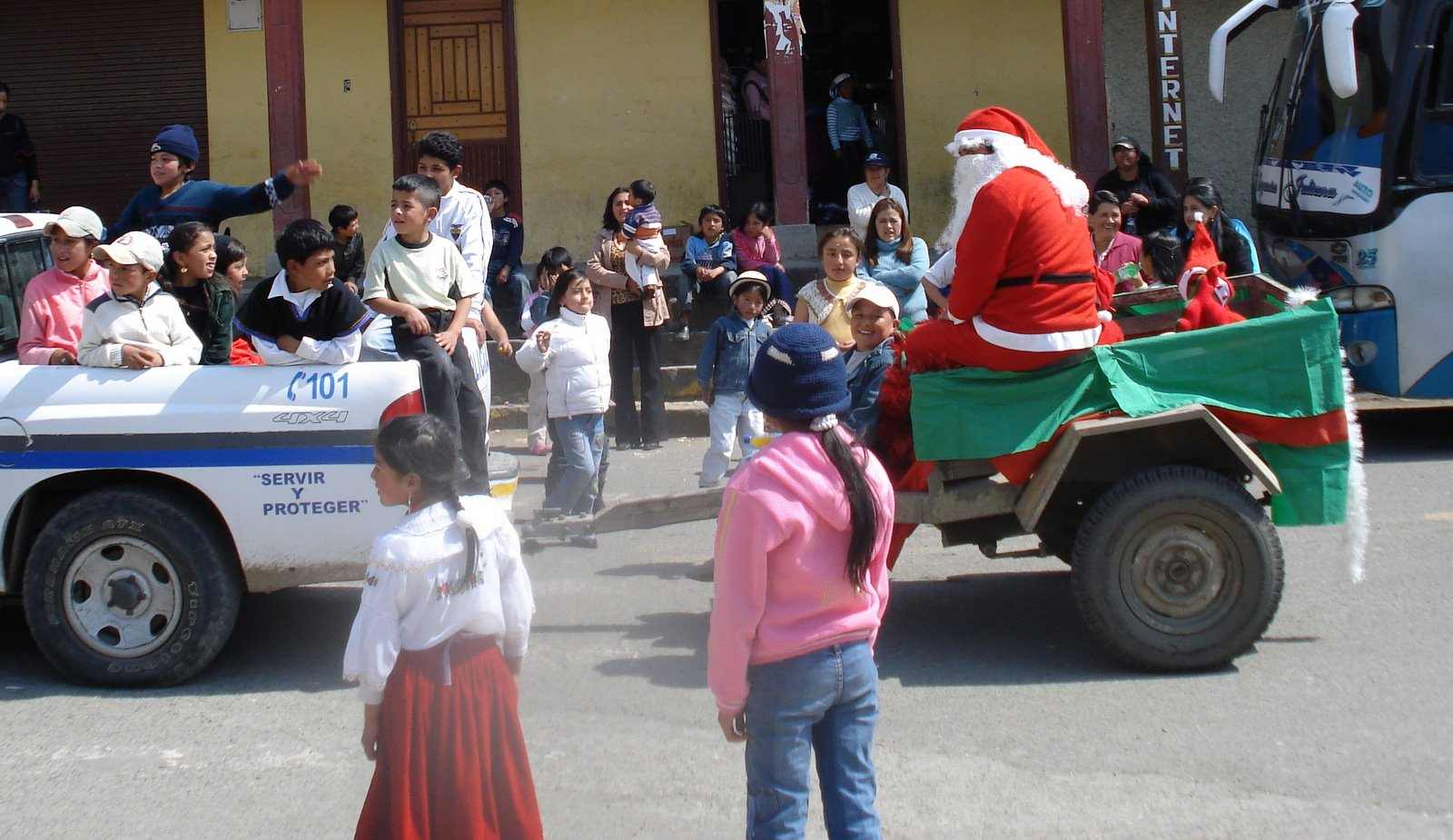
I have with me an advertisement of a new brand of sun – glasses which appeared some years ago in some newspapers in my country shortly before Christmas. It carried these words in bold letters; SEEING CHRISTMAS IN A DIFFERENT WAY.
This is the first thing we need to do to recapture the true spirit of Christmas. Let us look at Christmas differently from the way it is usually presented to us. Let us put Christ back into Christmas where He belongs. Celebrating Christmas without reference to Christ is like celebrating Independence or Republic Day without reference or mention of what our freedom fighters starting from Mahatma Gandhi have done for us.
Removing Christ from Christmas is like keeping someone’s birthday and inviting everyone else to it except for the most important person whose birthday we celebrate.
Involvement
The second message of Christmas is about involvement in the needs of others. Some years ago, nine physically handicapped persons decided to climb a 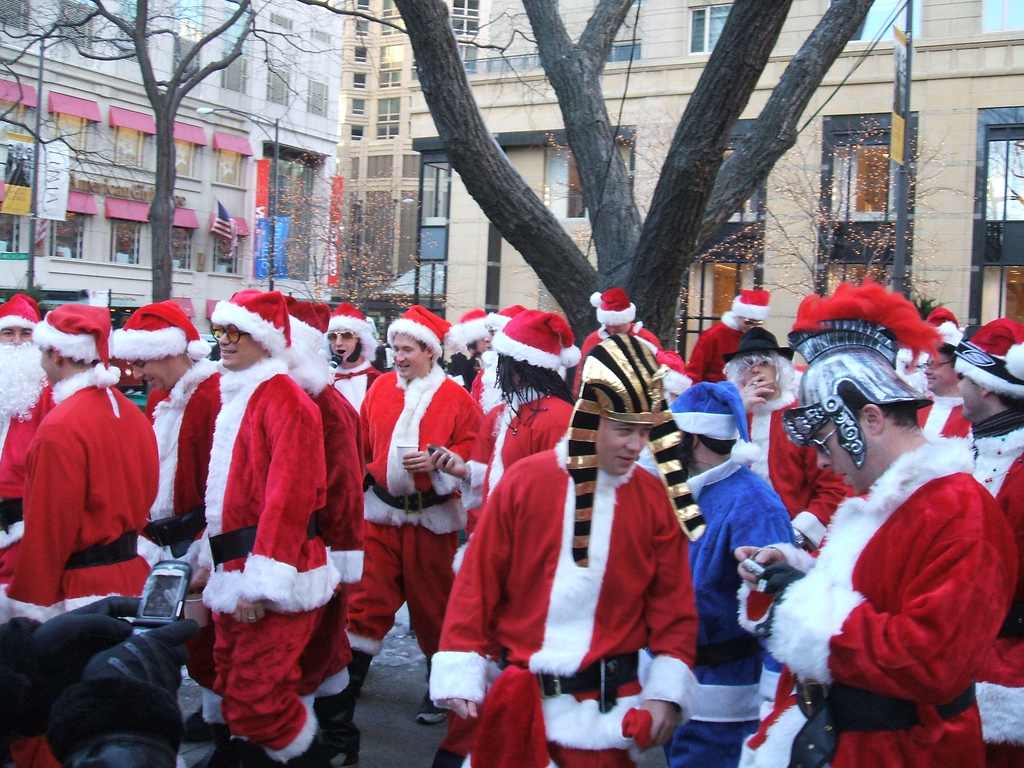 very high mountain in the Washington area of America. One of the climbers had an artificial leg, another was epileptic, two were deaf and five were blind. The mountain they wanted to scale is 14,000 feet high.
very high mountain in the Washington area of America. One of the climbers had an artificial leg, another was epileptic, two were deaf and five were blind. The mountain they wanted to scale is 14,000 feet high.
These nine handicapped persons succeeded in their feat and came down successfully. When they were asked how they managed such a near – impossible feat, one of the blind persons said, “We got a lot of help from each other.” Involvement at the greatest and best.
Jesus, whose birth we celebrate at Christmas, tells us that He came down because He wanted to be actively involved in the salvation of humankind. He saw hatered, bitterness, wars and sin in every form. He wanted to give His life for all. This involvement began on Christmas day and led Him to a cruel death on the cross.
If Jesus were asked, “How did you succeed in fulfilling your mission?” His reply would be very similar to that of the blind man mentioned above; “I got a lot of help from others.”
· Mary accepted to be my mother even though she did not understand the cost of it all in terms of human suffering.
· Joseph too, was actively involved. He saved me and my mother from certain death when Herod wanted to kill me not long after I was born. He fled with us to Egypt.
· Later on, when Jesus began His public life, He asked twelve fishermen to follow Him and they accepted, not knowing what it all meant in terms of suffering. They followed Him as He went about preaching, teaching and healing. They remained actively involved in spreading His message even after His death.
The world today is thirsting for love, understanding, forgiveness and compassion for the downtrodden. This calls for spreading this much needed message.
Christianity without involvement is not genuine. Christmas is not just carol – singing, merry – making, eating and drinking. It is involvement, which makes tough demands.
The Culture of Life
The spirit of Christmas is about the culture of life. It speaks about the preciousness of life.
Centuries before Jesus was born, the prophet Isaiah foretold the mission of the not – yet – born Christ as follows:-
“The eyes of the blind shall be opened
The ears of the deaf unsealed
Then the lame shall leap like a deer
And the tongues of the dumb shall sing for joy.” (Isaiah 35, 4)
Just a month before the birth of Jesus, an angel told Joseph in a dream, “Mary will have a son and you will name Him Jesus, because He will SAVE his people from their sins” (Matthew 1, 21)
On the day Jesus was born, another angel appeared to a small group of simple country shepherds to tell them, “I am here with Good News for you which will bring joy to all the people. This very day in David’s town your SAVIOUR is born – Christ the Lord.” (Luke 2, 10 – 11)
In other words, Jesus is foretold and portrayed as a healer, promoter, restorer and defender of LIFE.
Jesus and the Culture of Life
When Jesus began His public life at the age of 30, He propagated the culture of life. He projected Himself as “the resurrection and the LIFE” (John 11, 25), “the bread of LIFE” (John 6, 35), “the light of LIFE” (John 8, 12) and “the abundance of LIFE” (John 10, 10) His words are spirit and LIFE (John 6, 63).
Jesus preached LIFE and restored LIFE wherever and whenever He found it maimed or destroyed by death. He healed the sick whenever He met them. To heal is to cause to LIVE again. He brought the dead back to life and health because He believed in Life. He praised those who protected, defended and saved LIFE, as He did in the story of the Good Samaritan (Luke 10, 29 – 37).
The Culture of Death Today
In stark contrast to Jesus’ culture of LIFE, a quick glance at the newspapers tells us that we are living in and promoting a culture that favours death and destruction:-
· One stabbed by brother in – law.
· Miscreants attempt to burn man alive.
· Two housewives gang – raped.
· Dead body with multiple injuries found.
· Businessman’s son abducted.
· New – born baby found abandoned.
· Worldwide about 40 million abortions performed every year.
· Abortion of female fetuses still takes place.
· Honour – killing reported.
· Dowry – deaths still happening.
These ugly headlines speak about the culture of death which goes against the spirit of Christmas which preaches the culture of life.
If we want to celebrate Christmas meaningfully, we need to recover the value and beauty of life as God’s gift to us. Jesus believes in the sacredness of life. We need to do likewise.
We have no right to celebrate Christmas in the backdrop of the culture of death because Christmas is the feast of LIFE.
Fr. Joseph Cilia, SDB
Director
Don Bosco Youth Centre
Shillong
Cross - Cultural Christmas
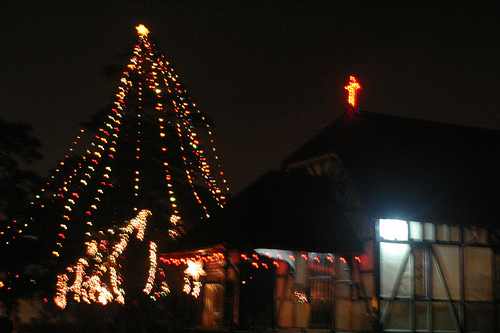 Another New Year is just round the corner. However, before that the entire world will witness the grand celebrations for Christmas which embodies a spirit of universality. Our own country India, which is an astonishing mix of myriad cultures will also celebrate Christmas in a grand way.
Another New Year is just round the corner. However, before that the entire world will witness the grand celebrations for Christmas which embodies a spirit of universality. Our own country India, which is an astonishing mix of myriad cultures will also celebrate Christmas in a grand way.
India is often considered as a Hindu country as Hinduism is the most prominent religion but this does not mean that people living in the country don’t give importance to other religions and festivals. India is a land of diversity; it is a country where all religions are equally respected. This is the one of the basic reasons why Christmas in India is amongst the biggest festive occasions. The Christian population is scattered all across the country and all of them along with the non-Christians celebrate Christmas in regional colours. Most markets and malls in metro cities are beautifully decorated which enhances the whole feel of the festival.
As India is a land of diversity, people from different regions have different customs and beliefs which affect the Christmas celebrations. The Northeastern part of India has been divided into 8 states which include Tripura, Assam, Meghalaya, Manipur, Arunachal Pradesh, Nagaland, Mizoram and Sikkim. Christmas is celebrated by people living in each of these states. Amongst the above mentioned states Christmas in Nagaland is celebrated in a very unique way as there are a large number of tribal Christian communities who perform traditional dances and prepare exotic food. Visiting Nagaland during Christmas and New Year is a great way in which to witness the one of a kind Christmas celebrations.
All in all Christmas is a very special occasion in India and people prepare special dishes for the day. The only difference is that the spicy Indian food replaces western Christmas dishes like turkey and geese. The food is one major difference that any traveler from the west will witness because Indian cuisine and other regional delicacies is what make Indian Christmas special.
Christmas is celebrated everywhere in India and most people enjoy time with their family and loved ones. The festival is quite special to the people living in the country and is celebrated in a unique way which automatically makes Christmas the best time to visit India. Records from previous years show that there has always been a substantial rise in flights to India during Christmas which means that people from all across the world love traveling to India at this time of the year.
Truly said, India is a country of great diversities. Yet all these diversities mingle into one stream creating unity in diversity. It has welcomed every religion and provided each of them a fertile ground to thrive and flourish. Likewise, Christianity set its feet on Indian soil about two thousand years ago. Although it could not spread far and wide unlike Islam, a number of states have a sizeable population of Christians. They are mainly concentrated in states like Kerala, Pondichery, Goa, Meghalaya, Mizoram etc.
So when it comes to Christmas celebrations in India, automatically names of a few of these states come to mind. But what most people seem to be unaware about is the fact that the Northeastern states of India also have a sizeable Christian population. They are mostly concentrated in states like Meghalaya, Nagaland and Mizoram while being present in substantial numbers in others like Arunachal Pradesh, Assam, Manipur and Tripura.
Whenever it is Christmas time, all these Northeastern states go into grand gala mode. It is also interesting to note that among the seven states, three states 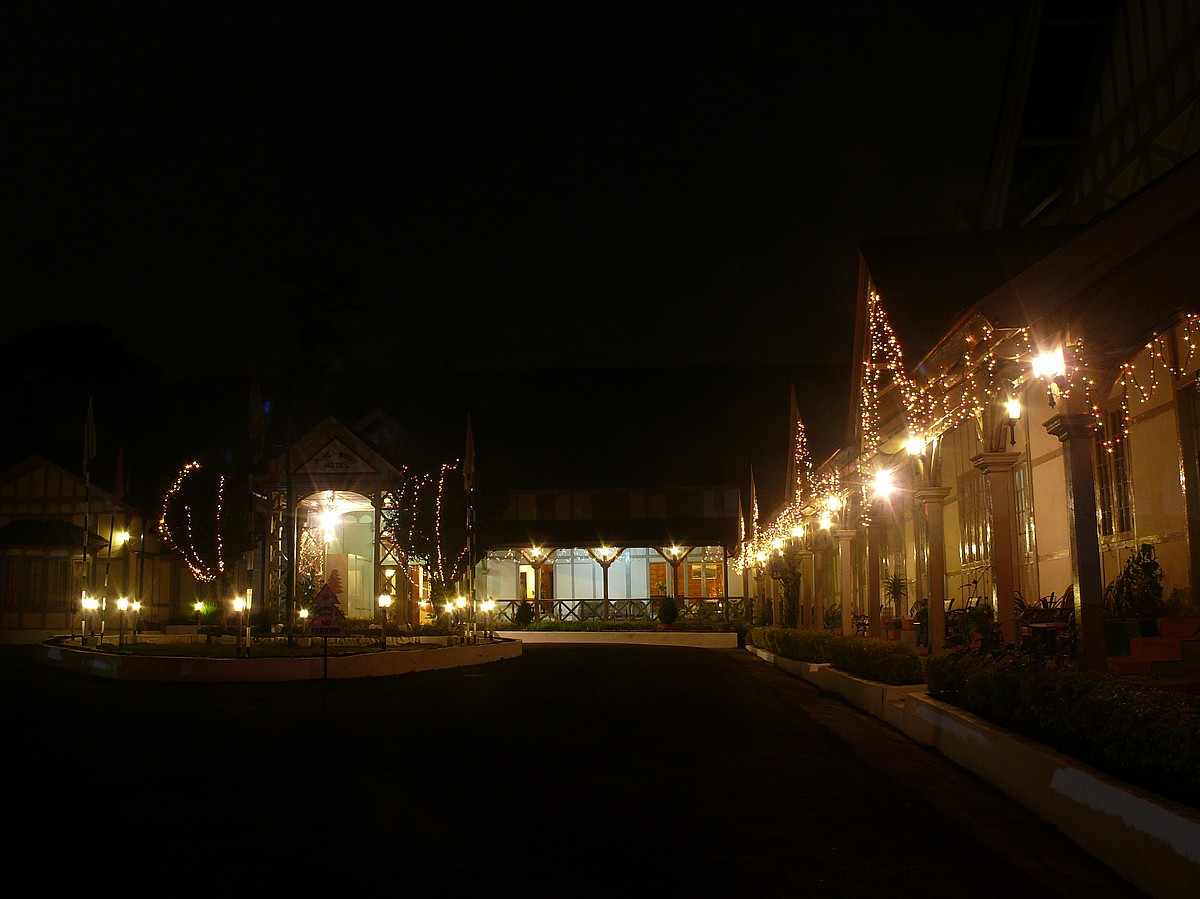 namely Meghalaya, Nagaland and Mizoram are basically tribal states. Tribes living in these states have embraced Christianity under the influence of various Christian missionaries but they have not dropped their traditional rituals and customs. They are very hard working people and agriculture is their main occupation. They love music, singing and dancing also. Almost every month, there is some festival or the other in the region and a major chunk of the tribal population takes part in these festivals.
namely Meghalaya, Nagaland and Mizoram are basically tribal states. Tribes living in these states have embraced Christianity under the influence of various Christian missionaries but they have not dropped their traditional rituals and customs. They are very hard working people and agriculture is their main occupation. They love music, singing and dancing also. Almost every month, there is some festival or the other in the region and a major chunk of the tribal population takes part in these festivals.
Around Christmas time a lot of festivity can be seen in the region because, due to the sheer number of festivals observed in the region, it is not uncommon for two or three local festivals to occur at the same time. Added to these festivals are celebrations to welcome the New Year. Hence, the spirit of festivity lingers on for the whole month of December and celebrations continue till mid January.
Christmas in the Northeastern part of India is celebrated in a very different and unique way. The impact of western culture as well as local tribal customs can be seen to blend together. In Meghalaya, for instance, Christians are mixed descendents of British and the local Khasi and Jantia tribes. Before independence, when the British reached this ‘pearl’ of the land tucked high amidst the lofty mountains, they were awestruck by its pristine beauty. They saw a touch of their own country in this state and hence, they called Meghalaya the ‘Scotland of the East’. They settled in Cherrapunjee and later moved the capital to Shillong; intermingled with the local tribes and marriages took place among them. Not only this, the British built the city of Shillong according to a well laid-out plan. No wonder then that today’s Shillong appears more or less like a British township. Its markets too have been built in British style.
Every year, around Christmas time, the entire state emits an aura of festivity. Markets are decorated aesthetically and every bit of it is illuminated, as is done in most parts of India during Diwali. On Christmas day, local tribal customs and rituals are also observed along with singing of Christmas carols and the adherence to Christian rituals. The age old concept of Santa Claus enthralls children here also as it does everywhere around the world.
Nagaland is another state where Christianity is the state religion. In fact, it is the only state in India which has adopted English as its official language and Roman as its official script as opposed to other tribal people who speak and communicate with one another in their local dialects. There is an interesting story behind this.
According to a local legend, the tribals had no written script for their spoken language. In order to preserve their dialects in written form, they decided to develop a uniform script. A team of knowledgeable people developed the script and wrote it on an animal skin which they left to dry in the sun. A dog came and ate the whole skin along with the script on it. Thus the dream to have a written script remained a dream. Later on, when Christian missionaries arrived, they introduced the local tribes to the Roman script which the locals readily grasped and embraced. This tale might have been framed to describe the influence of Christianity on the locals. But despite this, the local tribes have not only retained most of their traditional customs and rituals but have also kept them alive and vibrant. Nagaland is home to more than a dozen tribes such as the Angami, Ao, Chakhesang, Chang, Khachari, Konyak, Lokha, Phom, Pochury, Rengma, Sangtam, Sumi, Yimchunger, Zeliang and Kuki. All of these have local festivals typical to their tribe which are governed by the local calendar. Almost every month, there is some festival here which the tribal people celebrate with great enthusiasm.
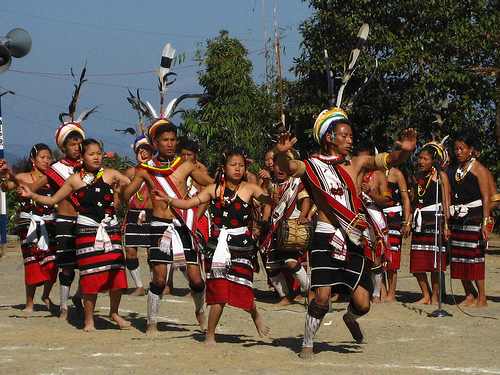 The Hornbill dance is one of the local festivals and is arguably the most popular one among the tourists and travelers. It coincides with Christmas as it is celebrated in the month of December. So the Hornbill dance and Christmas celebrations go on side-by-side, nay we should say they go on together. So, Christmas time sees a mélange of colourful tribal festivities everywhere in the state interspersed with the usual Christmas gaiety and carols.
The Hornbill dance is one of the local festivals and is arguably the most popular one among the tourists and travelers. It coincides with Christmas as it is celebrated in the month of December. So the Hornbill dance and Christmas celebrations go on side-by-side, nay we should say they go on together. So, Christmas time sees a mélange of colourful tribal festivities everywhere in the state interspersed with the usual Christmas gaiety and carols.
The unique Hornbill Festival, named after the bird, shows just how diverse a country India really is. Held in this tiny and remote Northeastern state of India, the festival is one of the largest celebrations of the indigenous warrior tribes of the region. It features traditional art, dances, folk songs, games, and music concerts. Local handicrafts are also put on sale during the festival. Unfortunately, a major drawback is that the festival is not easy to get to. Tourists require a permit to enter the state, and they must travel in groups of four or more people.
The Hornbill Festival is attended by all of Nagaland’s major tribes and features traditional art, dances, folk songs, and games. All this takes place amidst immaculate replicas of tribal huts, complete with wood carvings and hollow log drum instruments which are played in a haunting symphony at the end of the day. There are plenty of handicraft stalls, food stalls, and heady rice beer to indulge in as well.
In the evenings after sundown, the main attraction is the Hornbill National Rock Concert. Bands from all over the country come to compete in this musical extravaganza which is followed by a night market in the town.
Mizoram has an ancient and incredibly rich tradition of dances which reflect the amalgamation of centuries of cross-cultural inputs. The indigenous festivals of this beautiful state mirror it’s diverse heritage during the celebration of the seasonal cycle of sowing and harvesting.
‘Kut’ is the Mizo word for ‘festival’. Since Mizos are largely agriculturists by way of occupation, all the festivals are closely associated with agricultural activities. The major festivals of the Mizos are Chapchar Kut (March), Mim Kut & Pawl Kut (November/December) and Thalfavang Kut (November).
Various indigenous musical instruments are used during these festivities as accompaniments such as the ‘tingtang’ (guitar) a stringed instrument and the ‘Phenglawng’ (a flute). The revivalist movement of old traditions has seen the reappearance of love songs and lullabies originating from the time of the great migrations from Burma.
Mizoram is the third Northeastern state with a majority Christian population. Here again, the local tribals have embraced Christianity while at the same time, they have retained traditional customs also. Hence, the Christmas celebrations here also have a tinge of local festivity. Nevertheless, Christmas is one of the most important events of the Mizos. This festival is usually celebrated from 24th December to 26th December. Christmas Eve is celebrated on the 24th followed by celebrations in the church on the 25th of December. On the last day, a great feast is organized where everyone regardless of age takes part with great fervor.
One peculiar feature of Mizoram is the women market. In the capital Aizwal as well as in other towns of the state it is the women who control and run the shops. This has been possible only due to high literacy rate among women. Apart from this, most of the handicraft items are also produced by women. At Christmas time, these shops come alive with vivid colours. Lighting and decoration is also done profusely and in all this festivity, the women have a big hand.
Manipur is a land of festivities, merriment and mirth all the year round. A year in Manipur presents a cycle of festivals. Hardly a month passes without a festival or two. To the Manipuris, festivals are the symbols of their cultural, social and religious aspirations which, besides removing the monotony of life by providing physical diversions, mental recreation and an emotional outlet which help them lead a better and fuller life.
Chumpha -festival of the Tangkhul Nagas is celebrated for seven days in the month of December. It is a great festival of the Tanghul Nagas which is held after the harvest. The last three days are devoted to social gatherings and rejoicing. Unlike in other festivals, women play a special role in this festival. The concluding part of the festival is a procession within the village.
Christmas is the greatest festival of all the Christians of Manipur, observed for two days on December 24th and 25th. Prayers, reading of the Gospel, eating, singing of hymns, lectures on Christ and such; form a major part of the festival. In some villages where the inhabitants are well-off, the celebration continues till January 1st on which the New Years day is also observed.
In the remaining states of the North East namely Assam, Arunachal Pradesh, Tripura and Sikkim, Christians are comparatively fewer in number. Nevertheless, they celebrate this festival with great pomp and show sharing its spirit with the rest of the world. Needless to say, local non-Christian people also enjoy the festivity along with their Christian brethren. Thus all the Northeastern states present a marvelous example of unity in diversity.
So if you are planning to spend a quality end-of-the-year weekend and imbibe in the true spirit of festivity, re-look your itinerary. The Northeastern states present you with a chance to celebrate Christmas in a totally different ambience. A visit to these states during Christmas time will certainly rejuvenate your spirit.
Parveen Shrivastava

